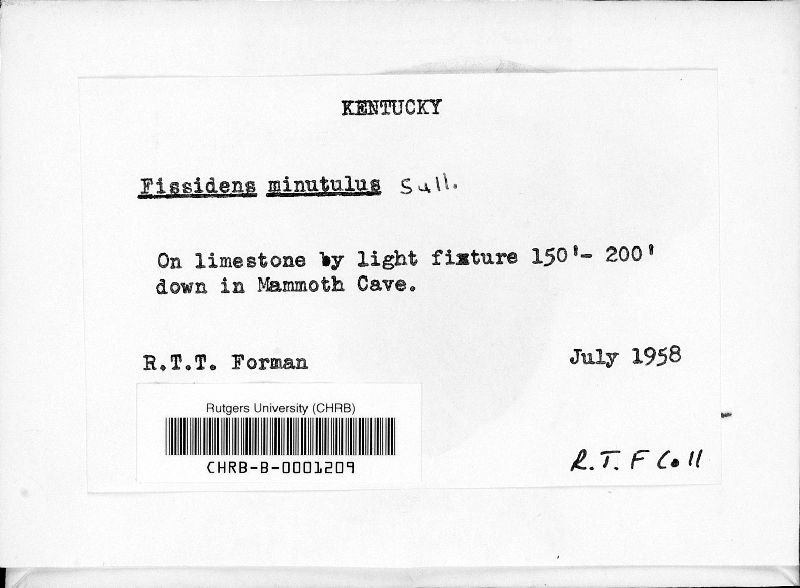Fissidens minutulus
|
|
|
|
Family: Fissidentaceae
|
Plants 0.5-7.5 × 0.3 mm. Stem unbranched; axillary hyaline nodules absent; central strand present or absent. Leaves as many as 12 pairs, lanceolate to oblong-lanceolate, occasionally narrowly lanceolate, acute to rarely apiculate, to 1.2 × 0.2-0.3 mm; dorsal lamina narrowed prox-imally, ending at or sometimes before insertion; vaginant laminae 1/2 leaf length, ± equal, minor lamina ending on or near margin; margin entire but serrulate to denticulate distally, limbate on all laminae, limbidium ending a few to several cells before leaf apex, not reaching proximal end of dorsal lamina, sometimes edged by 1 or more rows of quadrate cells in proximal part of vaginant laminae, limbidial cells 1-stratose; costa ending a few cells before apex to percurrent, bryoides-type; laminal cells 1-stratose, smooth, strongly bulging, ± obscure, firm-walled, irregularly quadrate to hexagonal, mostly 6.5-10 µm, in transverse section twice as deep as wide. Sexual condition rhizautoicous. Sporophytes 1-2 per perichaetium. Seta 1-4.5 mm. Capsule theca exserted, usually erect, radially symmetric, 0.2-0.8 mm; peristome bryoides-type; operculum 0.3 mm. Calyptra cucullate, smooth, 0.5 mm. Spores 10-16 µm. Rocks and limestone along streams and in moist shaded areas, occasionally on moist shaded soil; Ont., Que.; Ala., Ark., Calif., Fla., Ga., Ill., Ind., Kans., Ky., La., Mass., Mich., Minn., Miss., Mo., N.Y., N.C., Ohio, Pa., S.C., Tenn., Vt., Va., Wis.; Europe. Fissidens minutulus is often confused with an expression of F. bryoides. The two have similar habits, and both are found on rocks at edges of streams, although F. minutulus is found principally on limestone, while F. bryoides occurs mostly on acidic rocks. Moreover, the laminal cells of F. minutulus are small (6-10 µm), strongly bulging, and more or less obscure, unlike the somewhat larger, more or less plane, distinct cells of F. bryoides. In transverse section the laminal cells of F. minutulus are twice as deep as wide, while those of F. bryoides are more or less as deep as wide. Stems of F. minutulus are unbranched while those of F. bryoides are branched.
|





